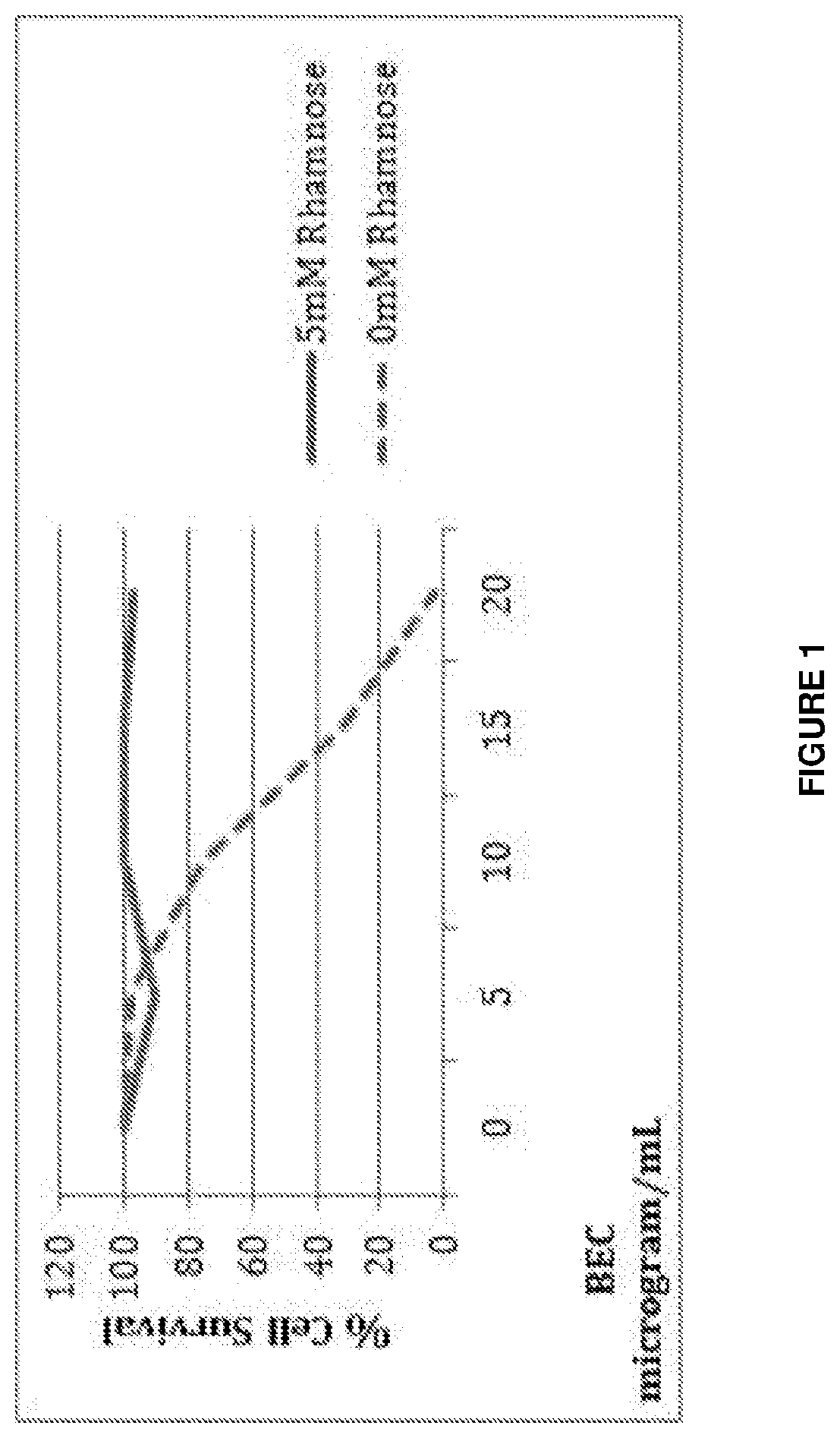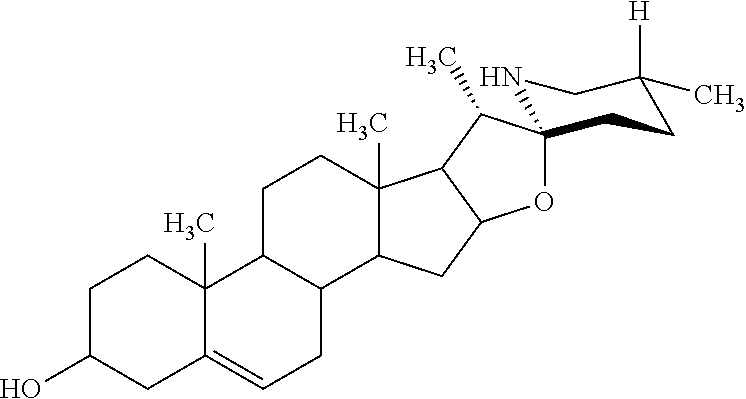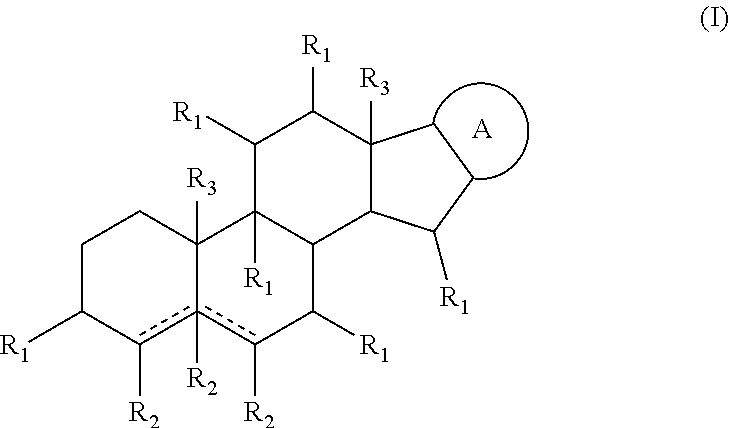Glycoalkaloid combinations and various uses thereof
a technology of glycoalkaloids and combinations, applied in the field of glycoalkaloids, can solve the problems of low safety profile, limited efficacy of chemotherapy, and single-modality chemotherapy with existing drugs, and achieve the effect of exfoliating the skin
- Summary
- Abstract
- Description
- Claims
- Application Information
AI Technical Summary
Benefits of technology
Problems solved by technology
Method used
Image
Examples
example 1
Preparation of Sugar Free Solasodine Glycoside
[0193]This example demonstrates a method for making a preparation of a glycoalkaloid which is essentially devoid (i.e., without) free saccharides including of the type which inhibit an interaction between the glycoalkaloids and their target cell.
[0194]A sugar free solasodine glycoside preparation was prepared according to the following: 50 kg Solanum Sodomaeum berries were put through a commercial meat mincer (fitted with I.HP electric motor 1425 rpm) with a sieve size of 3 mm.
[0195]The slurry was diluted with 3% acetic acid (pH 2.5) (food grade) to a volume of 200 L. This semi-solid solution was treated with a Silverson homogenizer for 15 minutes. Mixing was continued for another 4 hours using a SS rod with arms mixer at room temperature at 30 rpm (Flamingo CMG 0.75 kw variable speed control meter).
[0196]The solution was allowed to stand overnight without mixing. The solution was subsequently filtered through a muslin cloth. The filtrat...
example 2
Stability Analysis of Solasodine Glycosides
[0200]This example demonstrates preparation of different topical cream formulations of a glycoalkaloid comprising at least one keratolytic agent and with or without a viscosity modifier (e.g., as excipients and / or carriers), and assesses stability of the glycoalkaloid, active agent in those formulations. The results provided also demonstrate preparation of a novel, substantially stable and efficacious topical composition at least a glycoalkaloid, at least one viscosity modifier and at least one keratolytic agent with a long shelf life, for use in therapy.
[0201]In the case of previous human skin cancer studies, cream formulations comprising glycoalkaloids were tested within five months after the manufacturing of the cream. The results were remarkable. With these studies only the presence of the active glycoalkaloids were shown. However, their concentrations were not shown. See for example WO 2000061153A1.
[0202]In the present study, cream for...
example 3
Effects of Free (Unconjugated) Sugars on the Therapeutic Activity of Glycoalkaloids
[0224]This example demonstrates that free (unconjugated) sugar moieties such as free rhamnose decreases therapeutic anti-cancer / tumour efficacy of SR glycoalkaloids of the present invention.
[0225]To determine the effect of free sugar moieties on the anti-cancer activity of SR glycoalkaloids of the present invention, anti-cancer activity of increasing concentrations of BEC glycoalkaloids extract was determined under cell culture conditions in the presence of no free rhamnose and separately, in the presence of 5 mM rhamnose. To this effect, melanoma cancer cells were incubated with increasing concentrations (0-20 μg / mL) of BEC extract (which consisted of a constant mixture of solamargine, solasonine and di- and mono-glycosides of solasodine) in the presence or absence of free rhamnose. The results are shown in FIG. 1.
[0226]As shown in FIG. 1, increasing concentrations of BEC results in decreasing melan...
PUM
| Property | Measurement | Unit |
|---|---|---|
| temperature | aaaaa | aaaaa |
| particle size | aaaaa | aaaaa |
| time | aaaaa | aaaaa |
Abstract
Description
Claims
Application Information
 Login to View More
Login to View More - R&D
- Intellectual Property
- Life Sciences
- Materials
- Tech Scout
- Unparalleled Data Quality
- Higher Quality Content
- 60% Fewer Hallucinations
Browse by: Latest US Patents, China's latest patents, Technical Efficacy Thesaurus, Application Domain, Technology Topic, Popular Technical Reports.
© 2025 PatSnap. All rights reserved.Legal|Privacy policy|Modern Slavery Act Transparency Statement|Sitemap|About US| Contact US: help@patsnap.com



